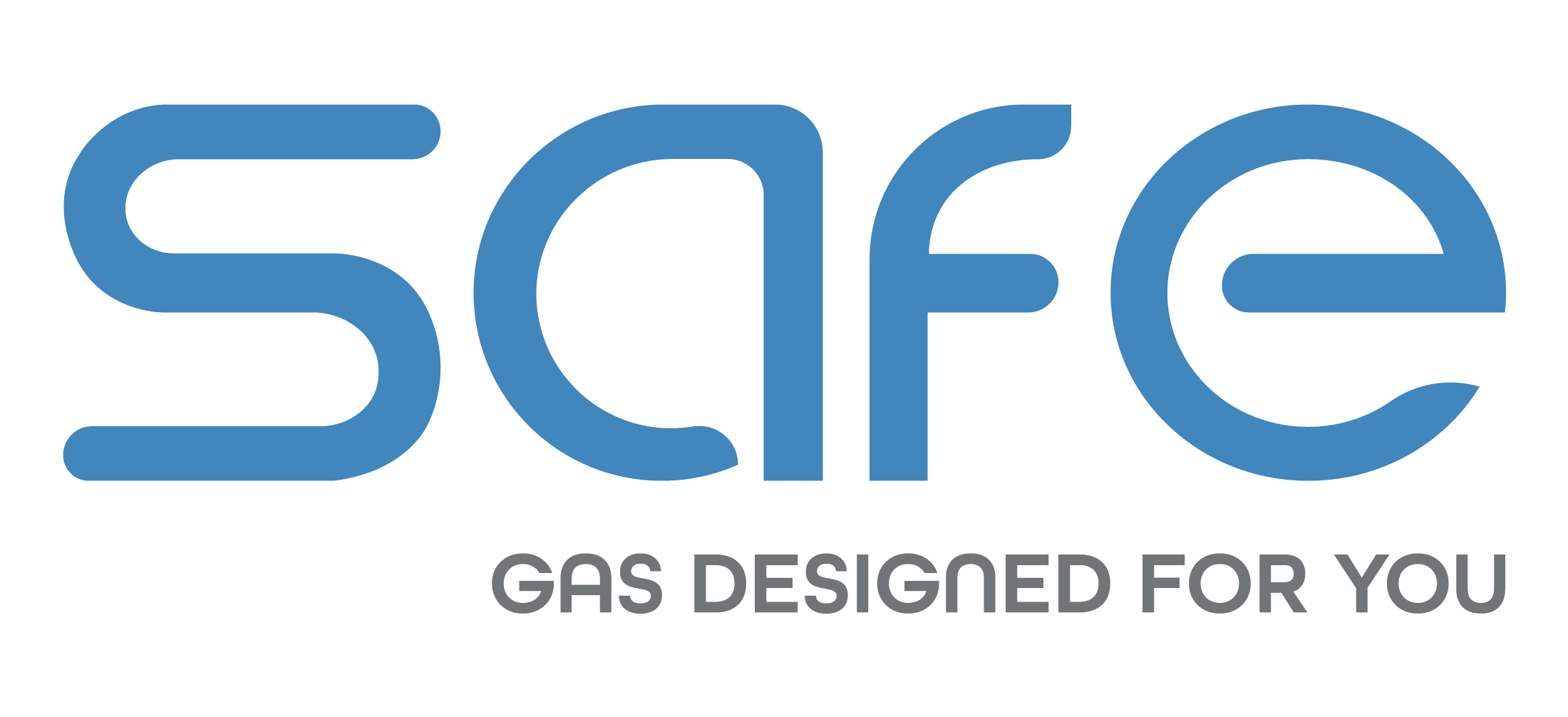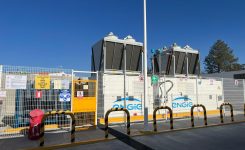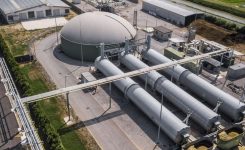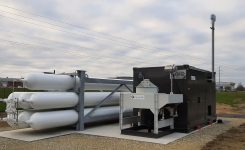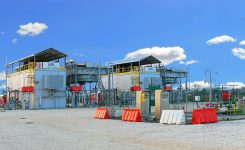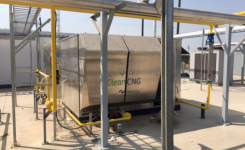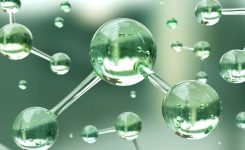News
ECOLOGICAL TRANSITION: why choose green hydrogen?
Although it accounts for about 90% of what is known in the universe, until today hydrogen has never been used on a large scale to produce clean energy.
However, this is changing: the path to green transition has been accelerated by international targets for full decarbonisation (by 2050) and the Covid19 pandemic, encouraging Governments and International Institutions (i.e. UN, EU, OSCE) to prioritise the production and the use of H2 in several applications.
Green hydrogen is produced by electrolysis, without CO2 emissions, from renewable sources. This makes it the right choice for the implementation of such a project: thanks to its flexibility, sectors such as industry (for the production of ammonia, agricultural fertilisers and petroleum products), transport and civil works are able to make a real contribution to achieving the objective.
It can also be transported and distributed both in gaseous form, through the grid, and in liquid form, by ship.
That said, in the past, the cause that has held back the use of this vector as primary energy source is production costs; nevertheless, it is estimated that from 2030 onwards, thanks to international, European and national investments and projects, the costs will tend to become increasingly competitive, going from 140 Eur/MWh in 2010 to less than half in 2030:
DNV’s recent analysis, ‘Energy Transition Outlook 2021’, estimates that, by 2050:
- Most of hydrogen will be produced through electrolysis while, a minority share, through steam reforming or CCS (18%).
- Thanks to lower production costs, hydrogen transport and distribution will also grow: starting from 2030 the first 100% hydrogen networks will come into operation, reaching by 2050 one fifth of total European capacity.
- With regard to the demand for H2 and derived synthetic fuels, it is estimated that in 2050, 30% will come from industry, 16% from sea transport, 6% from heavy road transport, 12% from aviation and 9% from civili works, while the remaining 27% will concern non-energy uses of hydrogen.
Inovation in the ecological transition: a global project
How are Countries reacting to these innovations?
In China, despite the fact that most hydrogen processing is concentrated, the high costs of electrolysis compared to those of gasification processes to obtain grey hydrogen makes green gas production still very low. Despite this, China is investing in the development of fuel cells for transportation.
South Korea is also moving in the same direction: the Government is planning to increase the number of fuel cell-powered cars and recharging stations; in parallel, 40,000 buses and 30,000 trucks will be introduced and, in terms of energy, the aim is to heat almost 950,000 buildings by 2040.
While Japan is promoting the establishment of the first international trade routes for green hydrogen transport from Brunei and Australia, the latter will administer a 300 $M funding fund to technically and commercially demonstrate the viability of large-scale hydrogen production.
In the EU, the 750 BEuros recovery fund project makes decarbonisation a pillar of economic growth.
Leading Countries include France and Germany: the former, with the aim of progressively converting the industrial sector from grey to clean and decarbonised hydrogen, foresees 10% use of green H2 by the end of 2022 and 40% in 2027.
The latter said it wants to achieve an electrolysis capacity of 5,000 MW, by 2030, and 10,000 MW by 2040. Germany’s Thyssenkrupp Group has announced the construction of a 200 MW plant in the port of Rotterdam by 2024: the electricity for production will be supplied by the 759 MW Hollandse Kust offshore wind park, designed and installed by Shell and Eneco, in the North Sea.
In Italy, there are several hydrogen projects and investments. In the transport sector, the 2020 H2iseO project envisages the purchase of 6 hydrogen trains that will operate from 2023; while the Life3H project has started the construction of three hydrogen refuelling stations in the area between the plateau of the Rocche d’Abruzzo, the Terni steelworks and the port of Civitavecchia. Furthermore, as regards hydrogen production, the construction of a blue hydrogen production, storage and distribution plant has been agreed, which will later be joined by another dedicated to the production of green H2; by 2025, distribution will also be extended to local public transport, thanks to the Snam network.
Finally, the first Off-Shore Hydrogen Valley, thanks to the Agnes project proposed by ENI: the construction of two wind farms, a photovoltaic park and an electrolyser plant, using disused platforms off the Adriatic Sea, which were once used for gas extraction, would bring major benefits:
- A maximum production capacity of 620 MW
- 4,000 tons per year of hydrogen to power around 2,000 buses
- 5 TW of energy per year to meet the demand of some 500,000 households
The SAFE&CEC Idro Meccanica Group’s contribution: 100% hydrogen infrastructure
Quality, innovation and efficiency are the pillars driving design, assembly, testing and installion of our innovative solutions. The added values that characterise our product portfolio include:
- Reliability and availability: wear parts are based on self-lubricating PTFE and have an average life of 5,000 operating hours.
- Green solution: The new generation features a Long Distance Piece, a full-length spacer between the hydraulic and gas parts, to avoid any contamination.
- Maximum compressor simplicity: only one moving part, the piston rod to which the oil and gas pistons are fixed.
- Finally, the high flexibility of our product line allows to operate up to 1,000 bar and be suitable for many applications:
| APPLICATIONS | PRESSURE |
| INDUSTRIAL APPLICATIONS | Up to 160 and 200 bar |
| POWER TO GAS (grid injection and cylinder trailer refuelling) | From 75 to 350 bar |
| H2 INDUSTRIAL PRODUCTION | 250 – 350 bar |
| 35 MPa Hydrogen Refuelling Stations (HRS) | Up to 450 and 500 bar |
| 70 MPa Hydrogen Refuelling Stations (HRS) | Up to 1,000 bar |
Believing that growth is driven by the production and the use of clean energy, protecting the environment and ensuring greater sustainability, is our mission: we trust that hydrogen is the main “engine” for a better world.
For that reason, with more than 160 compression units, installed and operating worldwide, we have been providing since 1996 infrastructure for the compression of hydrogen as primary energy source, through the entire energy value chain.

